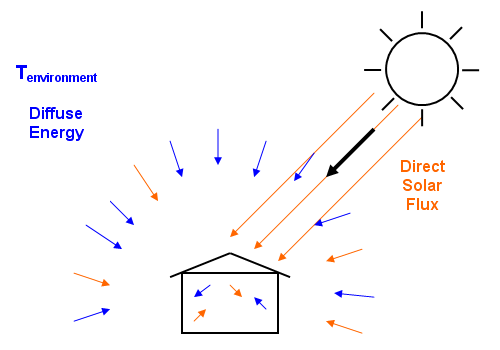Radiation Characterization
Radiation is characterized in terms of the following:
- Radiation Spectrum
- Spatial Domain for Solution of Radiation Transfer
- Radiation Properties
Radiation Spectrum
Within the full electromagnetic spectrum, the thermal radiation spectrum - approximately 0.1 to 100 - is pertinent to heat transfer. This thermal spectrum includes a portion of the ultra-violet (UV) range and all of the visible and infra-red (IR) ranges. The thermal radiation that a given object emits generally has a wide distribution of wavelengths. Relatively hot objects, such as the sun, emit thermal radiation over the entire thermal spectrum. Relatively cooler objects (T < 800K) emit predominantly in the infra-red range.
When radiation properties are invariant with wavelength, the radiation is said to be gray. Gray radiation is modeled using the Gray Thermal Radiation model. The radiation properties are taken to be same over the entire thermal spectrum, and only a single radiative transfer solution is necessary for the full thermal spectrum.
When the radiation properties vary with wavelength, the radiation is said to be spectral. Spectral radiation is modeled using the Multiband Thermal Radiation model. Different radiation properties can be specified for each individual spectral band, and radiative transfer is considered individually in each band. The total transfer is the sum of the contributions from each individual band.
Spatial Domain for Solution of Radiation Transfer
The effects of radiation are modeled within the regions in the simulation as well as between the regions. Radiation exchange between regions takes place whenever the interface between the regions is transparent or partially transparent to radiation.
In addition, radiation exchange with the surrounding environment can be modeled with the Surface-to-Surface transfer model (see schematic below). Both terrestrial and solar emissions can be considered. The Planck distribution governs the distributions of the solar and terrestrial emissions over the thermal spectrum. Solar emissions span the entire thermal radiation spectrum including the UV, visible, and IR ranges.

Schematic Representation of Radiation
Thermal radiative exchange with the terrestrial environment includes only diffuse effects. The terrestrial environment surrounding the regions emits diffusively as a blackbody at the environment radiation temperature. It is also possible to have thermal radiative exchange with the solar environment.
Radiation Properties
The definition of a radiation problem is completed by defining the properties of the media inside the regions and the surface properties of the boundaries. Non-participating media are transparent to radiation. The only requirement is that the surface properties of emissivity, reflectivity, and transmissivity are specified on the boundaries. In contrast, participating media can emit, absorb, and scatter radiation. These media additionally require you to specify the material absorption and scattering properties within the regions using the continuum material properties.